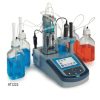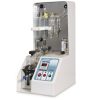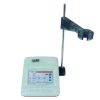TITRALAB AT1000 HACH LANGE:
Reliable results and easy setup.
During alcoholic fermentation acetaldehyde is produced:
- from yeast in the metabolism of sugars starting from pyruvate in the formation of ethanol
- subsequently it is the product of the oxidation of ethanol itself through oxidation processes of polyphenols, oxygen activated by the peroxide in Fe+
In red wines, acetic acid is in lower concentrations because it reacts with anthocyanins and tannins to create stable polymer pigments; it is also partially “consumed” by lactic acid bacteria during malolactic fermentation.
Knowing its exact concentration is extremely important because it combines with SO2, limiting its antioxidant and antiseptic power.

One of the most important aspects is its ability to bind to acetic aldehyde
It is a strong bond but reversible in fact in some oxidations Acetaldehyde is released
The proportion is 1 mg/L of acetaldehyde combines with 1.45 mg/L of So2.
It is necessary to use the right quantities of So2 because in the presence of excessive doses the yeasts react by producing more acetaldehyde, which will tend to combine and therefore make the treatment ineffective.
In unprotected wines, in contact with oxygen the bacteria produce acetaldehyde which represents the intermediate stage of acetic acid.

How is acetic aldehyde determined?
It can be determined with manual or automatic instruments and ready-to-use enzyme kits from the line

Find more information on the page: https://www.exactalabcenter.it/enologia/enzimatiche/










